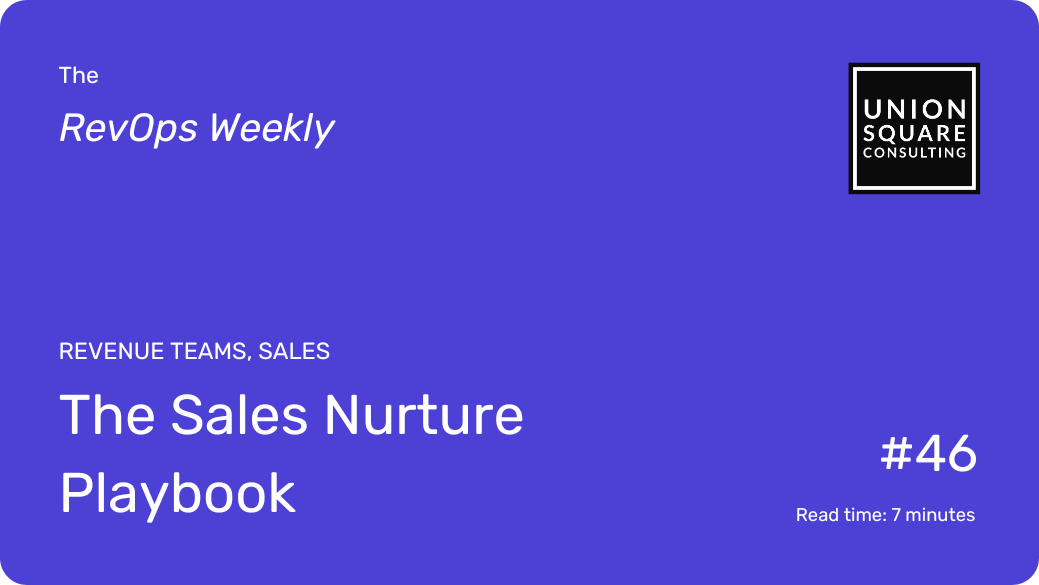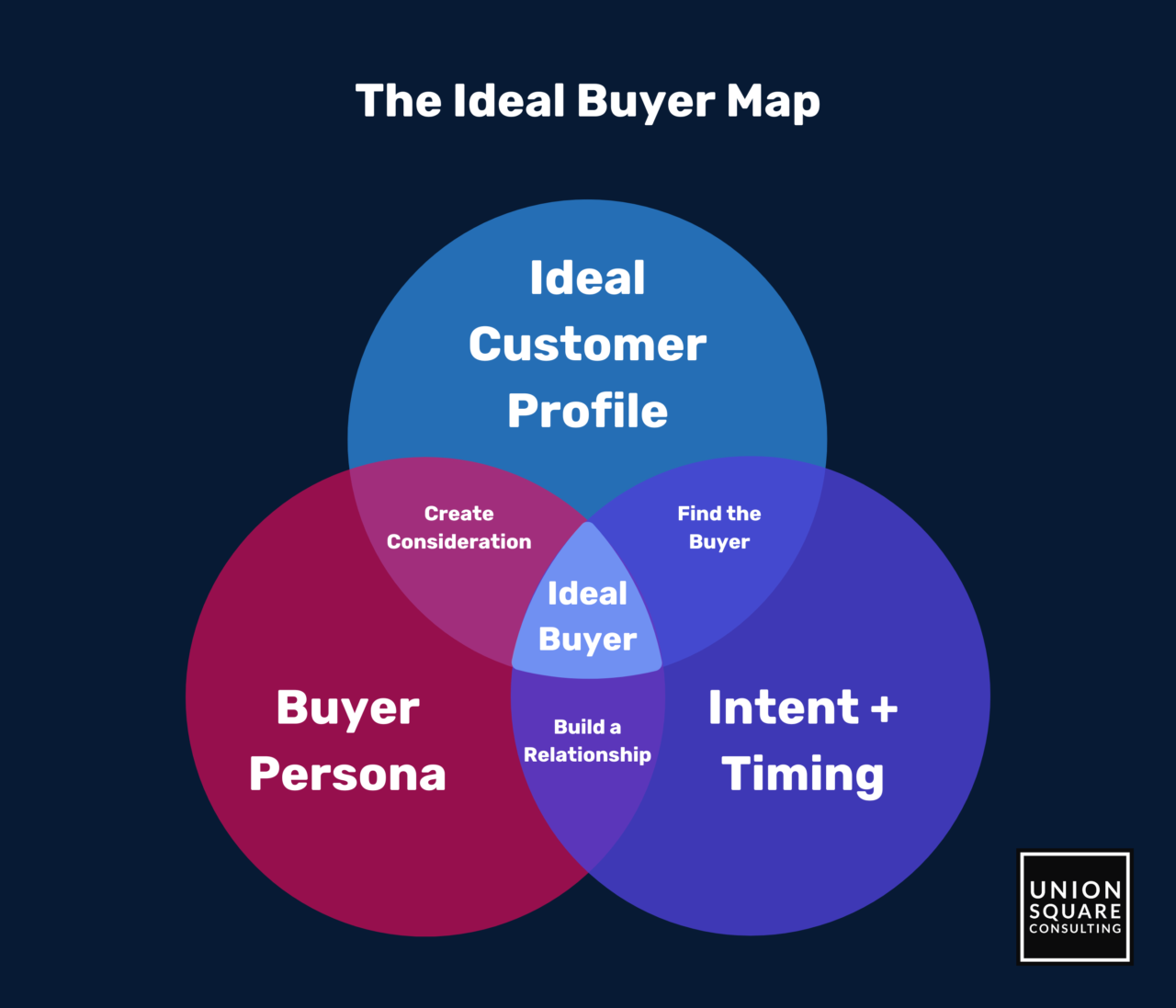
The Sales Nurture Playbook
Read time: 7 minutesExec Summary
- Ideal buyers meet 3 criteria:
- Right ICP
- Right person
- Right timing
- But perfect buyers are rare
- Usually, you need to nurture
- Each scenario requires a unique approach
- RevOps can support the nurturing process with data
- Sales should use cadences to address the missing pieces
All of our outbound efforts, as well as our foundational GTM strategy efforts, are aimed toward creating more velocity in surfacing, engaging, and closing ideal buyers.
To have an ideal buyer, 3 things need to be true:
- It’s the right time for the company to buy
- The company matches our ideal customer profile
- The person we’re talking to has enough buying influence
In a perfect world, every lead would come to us with the stars aligned and all we’d need to do is close them. Unfortunately, that’s not the case.
Here are the most likely scenarios for any team:
- Not all of our inbound leads match our ICP
- Our top tier accounts likely won’t have interest in the product right away
- Sometimes the best fit accounts will be locked into a long term contract with an incumbent and the timing is off – even though they’re a great fit
Once you line up your data sources (contact data, ICP fit, first party triggers, 3rd party intent data, etc.) we can begin creating plays to nurture non-ideal leads based on the piece of the puzzle that’s missing.
Using the diagram below as a cheatsheet, here’s how you can arm your outbound and sales teams with a plan of action for any scenario.
Scenario 1: ✅Intent/Timing, ✅Buyer Persona, ❌ICP
When the missing piece of the puzzle is the ICP fit of the prospect, you have to build a relationship with the Buyer Persona contact and play the long game, if your product price supports this time investment.
This play requires the most patience as there likely won’t be a sales opportunity with this current company for a while (if ever). So why bother?
Having an ongoing relationship with the buyer is valuable for 3 reasons:
- They can help you grow your network
- They may soon move to a new company that IS a fit
- Their company may evolve to a place where they become an ICP fit
In each of these situations you can rely on a relationship with the buyer to support the new upcoming opportunity.
How should we invest time here without neglecting our active pipeline and over-investing?
RevOps can support this in a big way by providing alerts and triggers about job changes. Many platforms such as User Gems and Amplemarket are making it easier to stay on top of job changes.
Also, consider “automating” your relationship a little by creating a quarterly check-in nurture campaign. This can be a series of automated plain text emails that simply send a note to share content or offer support.
Scenario 2: ✅ICP, ✅Intent/Timing, ❌Buyer Persona
Inbound marketing efforts most often bring us to scenario 2. We like the company, and we know the timing can’t be too far off, because they came to us. But, are they the buyer?
The research phase of any project or buying journey may begin with an individual contributor who’s tasked with researching vendors and making a list of options. During this phase, the contact is allowed to divulge details about the project to you, such as the project budget and timing. They’re able to easily confirm that the project is moving forward – but they may not have the authority to make this decision on their own.
In this case it’s time to identify the buyer and start working your way up.
This is also referred to as the “path to power”. Sales reps can’t spend too much time working on a deal where there’s zero buying power represented. The sales cycle is too long and the risk is too great of it getting stopped in its tracks once it’s sent for budget approval.
Outbound teams need to identify the correct persona and work to get them invited to some of the earliest meetings possible in order to get early influential buy-in.
Reps must use caution in this process – because the relationship with the initial researcher is still very powerful. This person can become your internal champion and provide the inside scoop on the buying process. You don’t want to look for the path to power in a way that alienates them and hurts the relationship you’ve built.
Scenario 3: ✅Buyer Persona, ✅ICP, ❌Intent/Timing
Right person, perfect company – wrong time. Like a romantic tragedy. One of two plans of action should be used here.
Play #1: The timing is bad because the prospect is stuck in a contract with an incumbent and you determine there is no way to break that contract early.
In this situation, your team needs to devise a plan to nurture this account until the contract is up. This includes marking the date of the contract ending and working backwards to create an engagement timeline that picks back up well before they give notice to that vendor. RevOps should be supporting this process with formulas, reminders, automated task assignment, etc.
No great sales rep should have to solely rely on their memory.
Play #2: The timing is bad because the team is just “not interested.”
Your work is not done. It’s up to sales and marketing to create moments of consideration by identifying product value and mapping it to pain points.
This can be done by:
- Sharing customer testimonials that articulate pains
- Performing rich discovery calls that can uncover some hidden pain
- Collaborating on exercises such as ROI sessions to quantify how much you can help
Your buyer may not have really put a label on the pain points they’re experiencing. Your job now is to give that pain a name and clearly articulate how your product solves it. Don’t forget to calculate the ‘cost of inaction’ which can sometimes be more compelling than our ROI story. This is sometimes all it takes to open up a window of consideration for a sales process to begin.
How Can RevOps Help?
All of you amazing Strategic RevOps practitioners out there may be wondering, “what can I do TODAY to put this into practice?” Here’s what we suggest:
- Train your team on the concept of the Ideal Buyer Map (seriously, just steal it!)
- Audit your tech stack to make sure the data points you need are available
-
- This includes job change triggers, 3rd party intent, and as many 1st party signals as you can get
- Examine the cadences that you use today and segment them into the scenarios above. Many of us are already running these plays – but perhaps not as intentionally as we could be.
- Add some simple fields to the contact or opportunity in the CRM that can help you track these scenarios, which makes for very easy list building.
- Create new cadences for any scenarios you haven’t covered yet as a team.
- Measure success by tracking how many of these leads become qualified opportunities over time.
- Need help implementing? Reach out to us!
We hope you’ll find this helpful and as always, please reach out with any questions.
When you’re ready, here’s how we can help:
Get a Free 1:1 Revenue Efficiency Workshop
Get one of our Senior Revenue Strategists to yourself for 1 hour and leave with a plan to increase the money-making power of your go-to-market operations.
Hire Us!
Bring us on as your Strategic RevOps Team and realize the growth potential of your revenue engine. There are 3 ways to work with us.
Get more tips like these, sent right to your inbox.
Subscribe for fresh, relevant revenue growth tips delivered every week.
